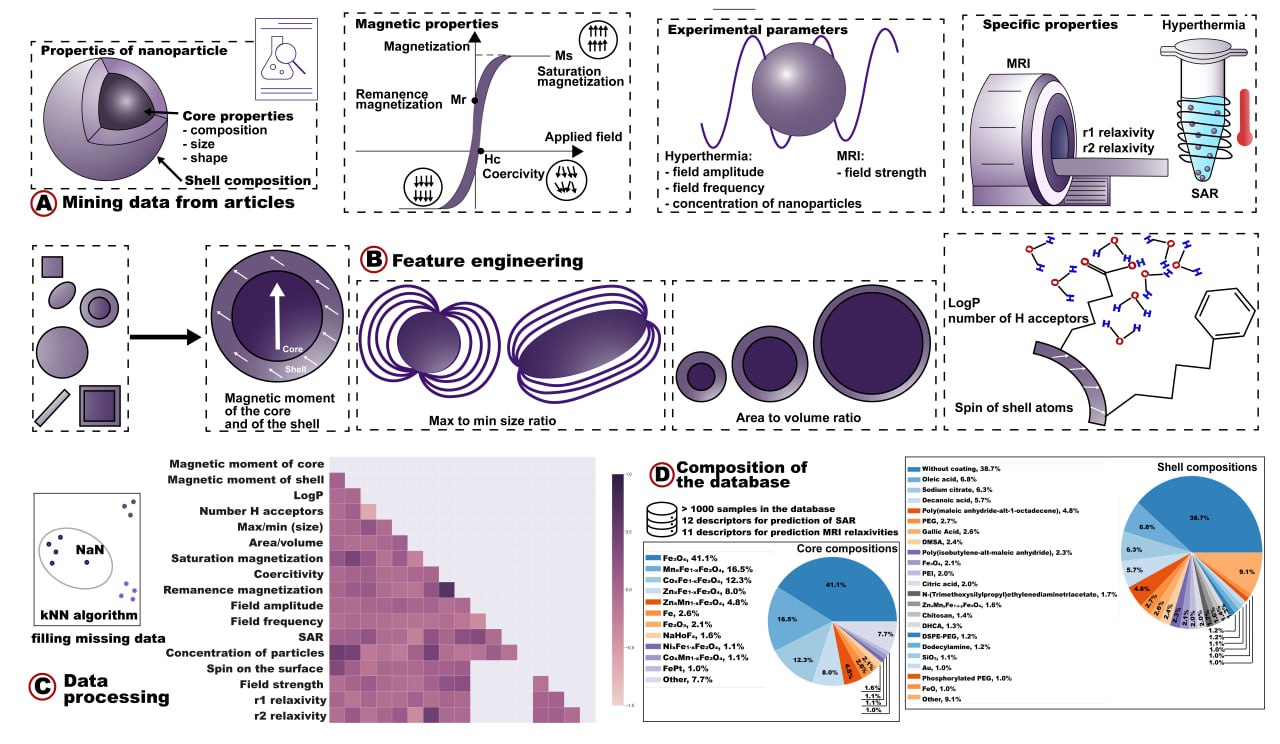Authors: Kim P. V., Serov N.S., Falchevskaya A.S., Ilia Shabalkin, Andrei Dmitrenko, Kladko. D., Vinogradov V.V.

Small, 2023, DOI:10.1002/smll.202303522
Abstract
Magnetic nanoparticles are a prospective class of materials for use in biomedicine as agents for magnetic resonance imagining (MRI) and hyperthermia treatment. However, synthesis of nanoparticles with high efficacy is resource-intensive experimental work. In turn, the use of machine learning (ML) methods is becoming useful in materials design and serves as a great approach to designing nanomagnets for biomedicine. In this work, for the first time, an ML-based approach is developed for the prediction of main parameters of material efficacy, i.e., specific absorption rate (SAR) for hyperthermia and r1/r2 relaxivities in MRI, with parameters of nanoparticles as well as experimental conditions as descriptors. For that, a unique database with more than 980 magnetic nanoparticles collected from scientific articles is assembled. Using this data, several tree-based ensemble models are trained to predict SAR, r1 and r2 relaxivity. After hyperparameter optimization, models reach performances of R2 = 0.86, R2 = 0.78, and R2 = 0.75, respectively. Testing the models on samples unseen during the training shows no performance drops. Finally, DiMag, an open access resource created to guide synthesis of novel nanosized magnets for MRI and hyperthermia treatment with machine learning and boost development of new biomedical agents, is developed.